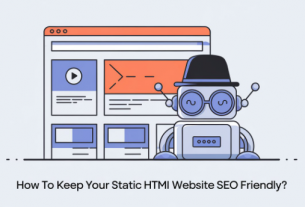Content marketing gets three times more leads per dollar than paid search. So there’s no question about whether or not your brand should be working on a content marketing strategy.
The real question arises when it’s time to choose which types of content you should invest in. Nowadays, there are countless content strategies and it can be a little bit overwhelming to choose one, particularly when you’re on a tight budget.
Two of the most popular content strategies are blogging and vlogging. With such similar names, what are actually the differences between the two? And more: what is the best one for your business?
Those are the questions that we’ll be addressing in today’s article, so keep on reading!
Blogging and Vlogging: What’s the Difference?
Only one letter separates the two concepts and although the rationale behind the two is similar, they are different.
Blogging is old-school. It’s short for “weblog” and it’s been around since the nineties. In short, when you blog, you use words (and sometimes images).
Blogging started as something personal, almost like a diary that you’d have online. With time it also became a big part of the digital marketing strategy of a lot of businesses.
So a blog is (or should be) updated regularly with newly written pieces, that start some kind of conversation with the readers. Hence why most times there’s a comment section on each post.
Vlogging is a lot more recent. If you know how popular video has gotten over the past few years, you can guess that the “v” in vlogging represents the video aspect of it.
A vlog is similar to a blog, in the sense that it also intends to start a discussion and it’s also a type of content that is released on a regular basis. The big difference is that it’s in video format.
Now that you are familiar with these differences, you might want to use both strategies. That’s great! In fact, blog posts with videos have the potential to increase your organic traffic by 157%.
But of course, you need to have time and money to do that. If you don’t, it might be a good idea to reflect on each of the approaches and decide which one makes more sense for your business at this point.
To make that job easier for you, we gathered a list of the pros and cons of both blogging and vlogging.
Blogging: Pros & Cons
Most companies have a blog section on their website by now. When they don’t it almost feels like an essential part of the website is missing.
This is not a coincidence, as more and more statistics prove the importance of creating written content as a brand. For instance, 61% of people have bought a product/service after reading a blog post. It’s a pretty good number, isn’t it?
Some reasons why blogging might be a good idea for your brand are:
- When it is updated consistently, a blog can be one of the best ways to improve your SEO.
- If you’re able to create written content that is relevant to other people in your area, blogging can make you an industry leader.
- You can get personal in your blog. A lot of consumers enjoy seeing the human side of a brand and blog posts are the best way fo giving them that.
- All you need is a computer or a tablet (or even a phone, although it’s not as comfortable).
- If you don’t have time to write in-house, blogging is very easy to outsource.
But there are also a few drawbacks associated with this strategy:
- 43% of people only glance at blog posts. This means that you need to work extra hard to grab their attention at first sight.
- Regularly publishing well-written posts about current topics is time-consuming, mostly because there’s a lot of research involved.
- Even if you don’t write, it’s time-consuming for you too. It requires you to be on top of the editorial plan and, possibly, to manage multiple writers.
Vlogging: Pros & Cons
Vlogging is a growing online segment. People from all over the world have started recording their daily lives and posting them online. Some of them become the so-called “Youtube celebrities” and others even make the jump into becoming a traditional celebrity.
But of course, these are individuals. The formula that they used to reach stardom with vlogs would most likely not work as well with a brand.
As a brand, there’s a lot more thought that should go behind your strategy because there’s also a lot more to lose.
The benefits of vlogging for businesses are:
- For educational purposes, the visual aid is very useful.
- It can make boring topics more exciting.
- With the right title and description, video content can help with SEO.
- You can get very creative with your videos, which will help set you apart from your competition.
- Videos are very shareable. In fact, they’re consumers’ favorite type of content to see on social media.
- There are higher chances that the content can go viral. So, it can spread the name of your brand at a scale that you’d probably not be able to do with just text.
On the other hand, vlogging can also have some disadvantages:
- Filming and editing high-quality pieces can take up a lot of your time.
- You’ll need to write a script, which is, more often than not, trickier than writing a blog post.
- You’ll need to buy the appropriate equipment to record, which can get quite pricey.
Conclusion
When it comes down to it, choosing between blogging and vlogging will depend on two things. Firstly, what’s your goal with each campaign you create and secondly, who’s the audience you’re speaking to.
If you want to teach people something that you do with your hands, like cooking or building, or if you’re creating for younger audiences, video content is probably the way to go.
If you want to be very informational or provide your audience with specific references, then it’s probably a good idea to invest in blogging instead.
Whether you end up going for blogging or vlogging (or for a nice mix of the two), you can find more articles on our website that’ll help you define your strategy. Feel free to explore our blog!




